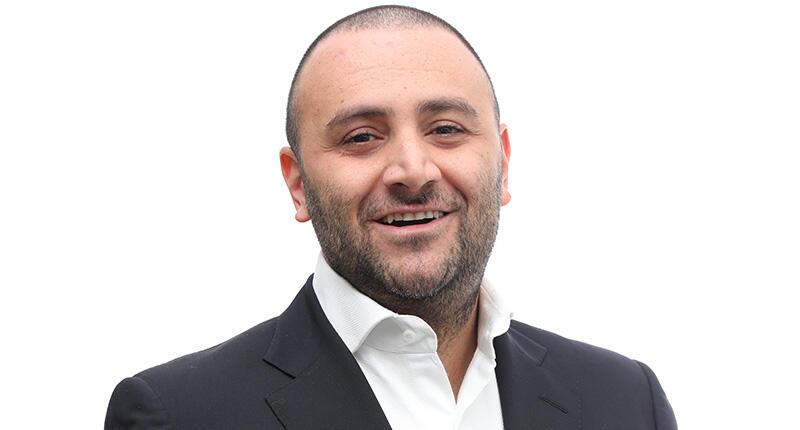Google Ads vs. Social Media Ads: Which Are More Effective?
Emmanuel Raheb outlines the differences between the two platforms and posits that the most successful jewelers use both.

Today’s customers start their shopping online, scrolling, searching and clicking, and you need to meet them where they are.
Of course, everyone has a website and to get traffic you need to advertise. But, with so many options, where should you direct your budget?
The two biggest players in digital advertising are Google ads and social media ads (primarily Facebook and Instagram, but there’s also Pinterest and TikTok, which are lesser used).
Both Google and social media offer major opportunities, but they serve very different purposes.
Let’s break down what works best for jewelry businesses like yours.
Google Ads Capture Shoppers at the Moment of Need
Google ads are text-search based, which means your ad shows up when someone types in very specific keywords like “diamond stud earrings for sale,” “custom engagement rings near me,” or “14k gold May birthstone necklace.”
These are people who are already looking for exactly what you sell; they’re in buying mode.
That’s why Google ads are so powerful. They target user intent.
With Google, you’re not interrupting someone’s day, you’re showing up immediately when they want to find you.
That means faster conversions and higher-quality leads.
It also means instant visibility, laser-targeted reach, and the chance to capture sales right when the customer is ready to buy with their wallet in hand and credit card out.
But there’s a catch. Jewelry is a competitive space. The bidding costs for high-value keywords like “engagement rings” can get pricey, and you’ll need to constantly manage and optimize your campaigns to stay ahead of the game and keep your costs low.
If you don’t have someone monitoring your keywords, tweaking your bids, or improving your landing pages, you could end up burning through your marketing budget really fast.
The biggest benefit of running Google ads is that you reach a real person who’s serious about making a purchase today.
Social Media Ads Help Build Desire
Advertising on social media is a great choice for jewelers because it’s so visual.
You can have gorgeous photos of your jewelry, behind-the-scenes videos, customer testimonials, styling tips, and any other type of content you can think of.
It all works to tell your jewelry store’s brand story and help “stop the scroll.”
Unlike Google, where people are just keyword searching, social media ads work by targeting a person’s unique interests and behaviors.
You can reach people who follow jewelry-related accounts, are getting married, or simply love luxury items, even if they are not actively looking to buy.
This is top-of-the-funnel marketing at its best. It plants the seeds for later sales.
Social ads help you build brand awareness, introduce your new jewelry collections, and creates emotional engagement.
The cost-per-click is generally lower than Google, but the challenge really comes in the creative.
If your photos or videos aren’t compelling enough, you’ll simply get skipped.
And ad fatigue is very real. People get bored easily so you have to keep your content updated and fresh to do its best.
Which Type Of Ad Works Better? It Depends On Your Goal
If you’re looking to drive immediate sales from people who are ready to purchase, Google ads are your best bet. They capture high-intent traffic and convert fast, if you do it right.
However, if your goal is to build long-term brand awareness, attract new fans, or show off your latest jewelry designs, social media ads are the way to go.
They get your store in front of people who didn’t know they needed your jewelry until they saw it. Now you’re on their radar.
Whichever you choose, there’s no wrong choice, just a different strategy. You want to build a business that thrives year-round, no matter what stage of the buying journey the customer is in.
Don’t pit Google against social media. Instead, use them together. Truthfully, the most successful jewelers use both.
Run a search campaign to capture the ready-to-buy customer, and a social campaign to inspire the ones who will buy from you next. Use social media to connect and Google to convert.
One ad sells the piece, the other ad sells the story. Together, they help you make the sale.
The Latest

Set in a Tiffany & Co. necklace, it sold for $4.2 million, the highest price and price per carat paid for a Paraíba tourmaline at auction.

The jeweler’s “Deep Freeze” display showcases its iconic jewelry designs frozen in a vintage icebox.

Take luxury gifting to new heights this holiday season with the jeweler’s showstopping 12-carat sphene ring.

How Jewelers of America’s 20 Under 40 are leading to ensure a brighter future for the jewelry industry.

This year's theme is “Unveiling the Depths of the Ocean.”


In its annual report, Pinterest noted an increase in searches for brooches, heirloom jewelry, and ‘80s luxury.

Starting Jan. 1, customers can request the service for opal, peridot, and demantoid garnet.

Roseco’s 704-page catalog showcases new lab-grown diamonds, findings, tools & more—available in print or interactive digital editions.

The 111-year-old retailer celebrated the opening of its new location in Salem, New Hampshire, which is its third store in the state.

The new catalog features its most popular chains as well as new styles.

The filmmaker’s personal F.P. Journe “FFC” prototype was the star of Phillips’ recent record-setting watch auction in New York.

The new location in the Design District pays homage to Miami’s Art Deco heritage and its connection to the ocean.

Inflations, tariffs, and politics—including the government shutdown—were among consumers’ top concerns last month.

“Longtime favorite” presenters, as well as first-time speakers, will lead talks and workshops at the annual event in Tucson next year.

Silas Smith of Meridian Metalworks won the challenge with his pendant that blends Australian and American landscapes.

The sale of the 31.68-carat, sunset-hued stone was part of Sotheby’s first series of events and auctions in Abu Dhabi.

The collection features characters and motifs from Ukrainian folklore, including an enchanted mirror and a magic egg.

MatrixGold 3.11, the newest version of the jewelry design program, offers more flexibility, precision, and creative control.

The pavilion will be part of the 2026 JA New York Spring show, scheduled for March 15 to 17.

Kadet, a 1994 National Jeweler Retailer Hall of Fame inductee, helped grow the family-owned retailer in the Chicago area and beyond.

Billed as the world’s smallest wearable, Lumia Health’s new smart earrings have a health tracker subtly embedded in the back.

Don’t let those with December birthdays feel blue. Help them celebrate their month with blue zircon, turquoise, and tanzanite.

The new pink sapphire version of the piece dances with its wearer in the brand’s “Icons After Dark” holiday campaign.

A choice that’s generated a lot of commentary, Pantone says “Cloud Dancer” marks a fresh start and encourages relaxation and creativity.

The manufacturer’s holiday campaign features a gift guide filled with trending designs and jewelry that can be personalized.

The man was charged with theft, accused of ingesting the necklace while in a jewelry store in Auckland, New Zealand.

The Florida independent expanded its store from 8,000 to 14,000 square feet, fulfilling the vision of its late co-founder, Jim Dunn.





























